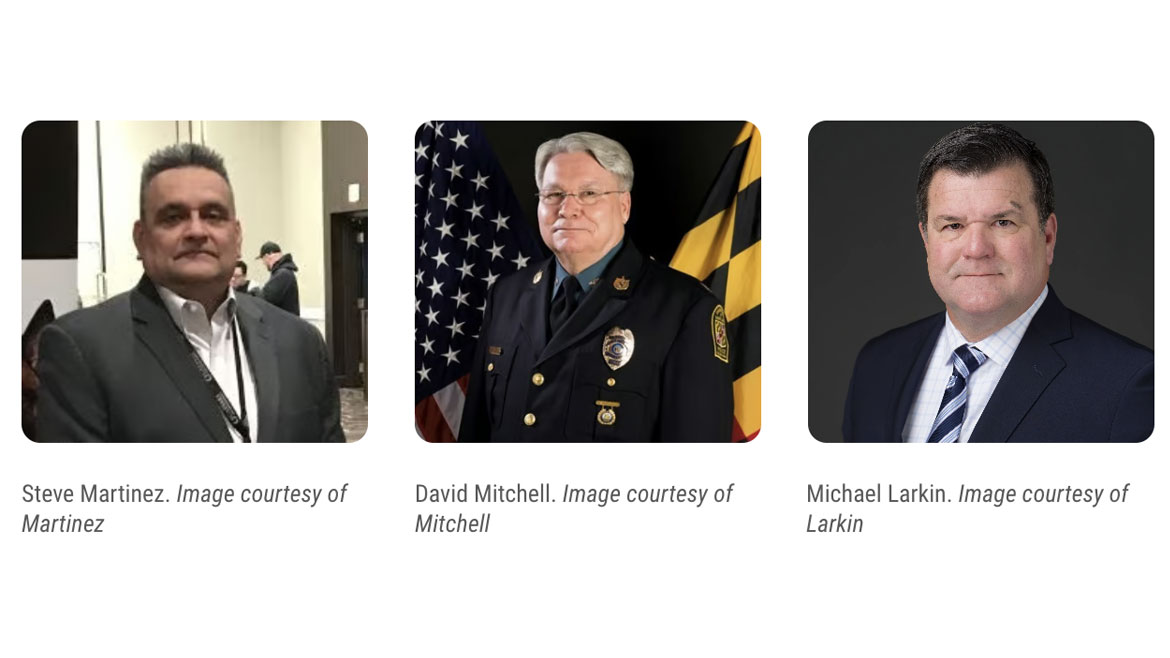Security Programs
Leveraging K-9 capabilities within security
Implementing K-9 security programs requires taking a look at the individual organization’s needs, end goals and budget.

At the University of Maryland, Chief of Police and Director of Public Safety David Mitchell wanted the K-9 patrol program to be friendly and approachable, rather than intimidating. Image courtesy of UMD
In addition to security guards, a number of organizations make use of K-9 officers when patrolling their facilities. At Hudson Yards, the massive commercial and residential development on Manhattan’s West Side, canine patrols are on the front lines of security.
“Every delivery that comes into the campus reports to a vehicle screening area — which is about a block or two away from the main campus — they are checked in and screened via canine,” says John Beirne, Vice President of Security at Hudson Yards.
“We also have a second dog that acts as more or less a rover or deterrent, walking the campus. Both are looking for explosive components, anything that could be used to damage our loading docks or our building structures,” he says. “If somebody is out contemplating doing something here, we want them to see a canine onsite that is working in our open areas at irregular intervals. Having them visible provides a physical deterrent.”
Security professionals lean on canine capabilities for deterrence, inspections, incident response, bomb-sniffing and, increasingly, for firearms detection. A number of key best practices can help to make best use of these four-legged assets and to develop mature K-9 security programs.

Appearances matter
A primary consideration in K-9 patrols is perception. There’s always a balancing act to be struck here, and security professionals who use dogs say they put a lot of thought into ensuring that customers and other stakeholders are comfortable.
“I can put a floppy-ear Labrador retriever with a plain-clothes person, or a pointy-eared dog with sharp teeth and a fully-armed handler in a Kevlar vest. The more aggressive you get with the canine and the attire for the handler, the better the visual deterrent. But that could cause some threat or alarm to your employees,” says MSA Security Chief Executive Officer (CEO) Glen Kucera.
At the University of Maryland, Chief of Police and Director of Public Safety David Mitchell is especially sensitive to how students will perceive his dog patrols on campus.
“I love German Shepherds, but anybody in uniform with a German Shepherd conjures up a traditional patrol dog, which can look aggressive. We wanted a softer, gentler approach because these dogs work crowds; they’re walking around on the concourse of the football stadium,” he says.
K-9 experts distinguish between floppy-eared (Labrador types) and pointy-eared dogs. “The general public tends to be more afraid of pointy-ear dogs, so we use floppy-ear dogs in public-facing venues,” says Michael Larkin, Vice President of Commercial Services, Global K-9 Protection Group.
Markings help as well. “You can dress them up or dress them down. Put a vest on them and ‘do not touch’ signs. You’re doing that to elevate or deescalate what you’re trying to get across,” Larkin says.
At Hudson Yards, Beirne leans heavily on markings, both to alert the public to the dog’s role and to ensure the dog handlers can operate without interference. “You don’t want [handlers] wearing plain clothes, looking as though they’re out walking their dog,” he says. “I want the public to know who they are, so they wear tactical cargo pants with a jacket that identifies them. They usually have a hat on [that says] ‘canine handler.’ We don’t want it to be too over the top, but we want it to stick out a little bit, so people know exactly what they are.”
At Caesars Entertainment, Special Response Team (SRT) and K-9 Program Manager Steve Martinez takes a similar approach. “We want our guests to feel comfortable and safe,” he says. “Our dogs wear a vest with the Caesars logo on it, showing that they are a working dog. We also have a patch on there that says: ‘Do not pet.’ We don’t want our guests to just randomly approach our dogs, because they are working dogs and they don’t need any distractions while they are working.”

Best practices for K-9 patrols
Beyond managing perception, a number of other key best practices can help security professionals to deploy canines successfully.
It starts with a consideration of physical spaces. “Before you even find your dogs, you need a place to train and a place to kennel them,” Martinezsays. “When Caesars Entertainment hired me, one of the first things I had to do was help design and build the Caesars Kennel, a nine-bay kennel facility we built out of an old store location that Caesars owned.”
From there, Martinez set about strategizing his patrols. Like others, he was looking to balance the use of the dogs, putting them to work for routine inspections and also making them available for incident response.
“We do a proactive patrol where we go through our properties with high visibility. If bad guys are looking at our property as a target, they’ll see that we have dogs working the property,” he says. “We also go to what we call ‘productive’ areas — where it’s more likely that explosives could be found, like a baggage room. We look at the check-in areas, and the dogs will routinely walk through there sniffing the bags to see if there’s any explosives in the bag.”
Beirne says that his team utilizes K-9 patrols for different tasks depending on the time of day. “Our busy hours down at our vehicle screening area are from about 6 to 9 a.m., and in order to process the vehicles quickly, we’ll have both dogs down there,” he says. “Once we get a lull in the action around 9 or 10 a.m., that other dog retreats back up to the campus to become more of a physical deterrent.”
Martinez adds that he uses his canines for reactive response. “Let’s say we get a call of a bomb threat in a particular area of one of our hotels: we’ll respond with canines to that location and check it out to make sure it’s safe,” he says. “We also have a lot of times when people forget baggage: they check out early, or they go to the machines and gamble and they forget their bags. We get a lot of unattended bags, and we’ll send our canines to check them out to ensure that the bags are safe to handle.”
At the University of Maryland, Mitchell has been especially focused on utilizing canine capabilities for special events. “We have Big 10 games in our football stadium and our basketball arena. We have VIPs coming to campus: we’ve had the President of the United States here on multiple occasions, a former First Lady, members of Congress,” he says. “It makes sense to be able to check venues and make sure that there’s nothing coming in that shouldn’t come in.”
Some security professionals will leverage outside expertise for the actual dog-handling tasks. Mitchell has chosen to train his own campus cops for the work. This takes a little more effort, he says, but it yields some particular benefits.
The right handler
When it comes to dog handlers, “you want people who have the right disposition,” Mitchell explains, and that will be willing to take care of the dog. “There are times you have to go to the vet. They’re like kids in a way, because they get colds and they don’t feel good on a certain day. Having a partner that has fur and four legs is a lot of extra work.” In addition to care, Mitchell says handlers need to have customer-service skills so they can interact with the public in a friendly manner.
Not everyone is a good fit. “You have to apply for this. The dog has got to fit with your family. It needs to fit in with other pets. And this is a physically demanding position. You’re running obstacle courses per the training. You’re up and down a lot of stairs,” he says.
On the upside, having in-house handlers creates new opportunities for the security team and allows for growth opportunities. “Officers are interested in the job enlargement. They’re looking for ways to continue to be a police officer, while adding a different element [or skill] to their resume,” Mitchell says.
Firearms detection
Though many security professionals use K-9 teams for physical deterrence, specialty dogs can be utilized for different risks and security needs.
“Until recently, canines were most commonly used for patrolling and for explosives detection,” Kucera says. “In the past year or so, there’s been a program developed for canines to detect firearms, whether person-borne or sitting in a bag. If you feel your organization could be at risk for an active shooter, then you may want to utilize a canine to help mitigate that risk.”
Martinez is also exploring this use case. “We partnered with the Animal Foundation here in Las Vegas, and we actually adopted two dogs from that foundation and rescued them to train for firearms detection,” he says. “We do have nightclubs on our properties, and we typically will deploy the dog at the nightclub, those high-density crowded situations or events. We want to make sure no firearms get into those types of venues.”
Beirne says he’s also interested, but he is waiting to see how the security industry overall adapts to this new use case. “In the current climate today, firearms are a potential threat, and if canines could help mitigate that threat, that’s something we’re definitely interested in,” he says.
Looking for a reprint of this article?
From high-res PDFs to custom plaques, order your copy today!







